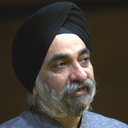The burden of pneumonia in children: an Asian perspective.
Palavras-chave
Resumo
Pneumonia results in two million deaths each year among children worldwide (20% of all child deaths), 70% of them in Africa and South-east Asia. Most countries in Africa and Asia record 2-10 times more children with pneumonia (7-40/100 annually) than in the USA. Apart from resource constraints and an overburdened health system, there is lack of uniformity in defining pneumonia. Most nations employ a WHO standard case management protocol using age-specific cut-offs for increased respiratory rates and chest in-drawing for a clinical definition of pneumonia. The limited data available on the causative organisms have identified Streptococcus pneumoniae, Haemophilus influenzae and viruses such as respiratory syncytial virus (RSV), influenza, para influenza and adenoviruses as the major pathogens. Measles infection increases pneumonia morbidity and mortality. Low birth weight, under-nutrition, hypovitaminosis A, zinc deficiency, lack of breastfeeding, air pollution (including environmental tobacco smoke) and over-crowding increase the risk for pneumonias in children. Standard case management protocols used for acute respiratory infections (ARIs) in these countries have brought down the disease burden but an improvement in the diagnostic algorithm is needed to appropriately recognise those with associated wheeze. Research is needed to find effective and affordable preventive strategies.


